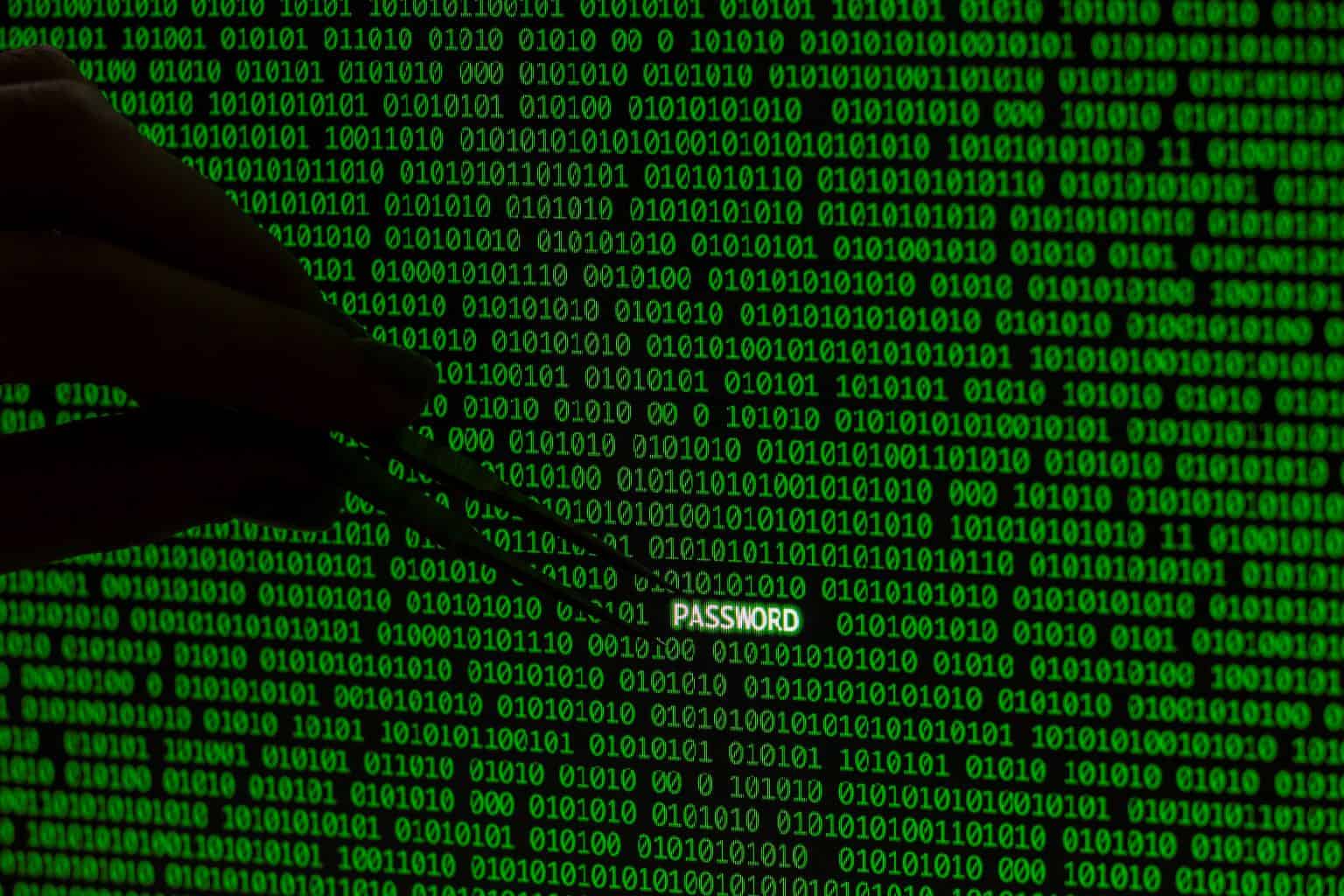Ransomware and Email Security: A Comprehensive Guide to Protecting Your Digital Assets

Ransomware andEmail Security A Comprehensive Guide to Protecting Your Digital Assets Get a Quote Download Datasheet Email Security >Ransomware Ransomware and Email Security: A Comprehensive Guide to Protecting Your Digital Assets By Cian Fitzpatrick | 14th February 2024 Ransomware attacks have escalated rapidly in the first few months of 2024. And while they were always a formidable threat to individuals and businesses alike, these attacks are becoming even more sophisticated. But all is not lost. As Deloitte’s report explains, 91% of all cyber attacks come through email. That gives us the first clue as to how to withstand being In the crosshairs of ransomware attacks. Namely, email security emerges as a frontline defence, pivotal in thwarting the advance of malicious actors. To do this, it’s important to understand the intricacies of ransomware and how fortifying your email protocols can significantly mitigate the risk of a devastating breach. In this article, you will learn: The nature and evolution of ransomware threats. Best practices for enhancing email security. How to create a robust response plan for ransomware attacks. Investing in your email security is a strategic business move that has benefits across your whole organisation. Now that it’s Spring, why not spring clean your inbox to protect your digital assets against the growing tide of ransomware threats through strategic email security measures. Understanding Ransomware DMARC stands for Domain-based Message Authentication, Reporting, and Conformance. This protocol, integrating SPF (Sender Policy Framework) and DKIM (DomainKeys Identified Mail), is crucial in verifying email authenticity. In turn, ensuring an email really is from who it says it is from reduces the risk of cyber threats such as phishing and spoofing. Now we can see the Valentine’s link! Verifying your email authenticity is how you treat your email recipients well! The Critical Role of Email in Ransomware Attacks Email remains the most common vector for ransomware attacks, serving as a direct line for attackers to deliver malicious payloads to unsuspecting victims. This is a sobering thought, but it’s also an encouraging one. Shore up your email security and you go a long way to securing your whole business. The simplicity and effectiveness of email-based tactics, combined with the human factor of curiosity or negligence, make email a preferred tool for cybercriminals. Ransomware is often spread through phishing emails that masquerade as legitimate communications from trusted entities. These emails might contain malicious attachments or links that, once clicked, initiate the ransomware infection process. For example, a seemingly benign PDF or Word document attached to an email can, when opened, unleash ransomware onto the user’s system. Similarly, links embedded within the email body can redirect users to compromised websites designed to download ransomware directly onto their devices. Protect your organisation against ransomware attacks Get A Quote Enhancing Email Security to Combat Ransomware Even with robust preventive measures in place, the possibility of a ransomware attack cannot be entirely eliminated. For this reason, having a comprehensive ransomware response plan is crucial for minimising damage and swiftly restoring operations. Key components of an effective response plan include immediate isolation of infected systems, identification of the ransomware variant, a communication strategy, engagement with cybersecurity professionals, recovery and data restoration and post-incident analysis and strengthening defences. Developing a Ransomware Response Plan Google and Yahoo will start rejecting a portion of email correspondence from users who don’t comply fully by the deadline in the coming months. You may receive particular error codes and messages if your emails are refused because they don’t follow these new guidelines. These codes are useful bits of information that can help you solve the problems; they are not just arbitrary strings of characters and numbers. Case Studies: Successful Defense Against Ransomware These case studies have been compiled from an amalgamation of real world examples to highlight the importance of preparedness, the efficacy of comprehensive email security and the benefits of having a rapid response plan. 1. Example of a Phishing Email Leading to Ransomware Infection. Imagine a finance manager at a mid-sized company receives an email that appears to be from their CEO, requesting urgent review of an attached invoice. The email looks legitimate, complete with the CEO’s email signature and company logo. However, the attachment is actually a malicious file that, once opened, encrypts the company’s financial data and demands a ransom. This example illustrates the sophistication of phishing attempts and the importance of verifying email contents before opening attachments. 2. Example of a ransomware attack on a small business without a backup plan. A small retail business falls victim to a ransomware attack after an employee clicks on a malicious link in an email. The ransomware encrypts their sales and inventory data, causing the business to halt operations. Without recent backups, the business faces a dilemma: pay a hefty ransom with no guarantee of data recovery or attempt to rebuild its data from scratch, risking significant financial and reputational damage. This scenario highlights the critical need for regular data backups as part of a comprehensive cybersecurity strategy. 3. Successful Mitigation of a Ransomware Attack Through Quick Response. An IT administrator at a law firm notices unusual network activity and quickly identifies it as a ransomware attack in progress. By immediately isolating the infected systems and deploying the firm’s response plan, the administrator prevents the ransomware from spreading to critical case files. Thanks to well-maintained and encrypted off-site backups, the firm is able to restore the affected systems without paying the ransom, showcasing the effectiveness of a rapid response and robust backup strategy. The Ransomware Menace The menace of ransomware looms large. It’s also not going away anytime soon (if ever). But understanding its workings and prioritising email security can significantly reduce your vulnerability to attacks. Our intention with this article has been to explore the evolution of ransomware, the critical role of email in its dissemination, and actionable strategies for fortifying your defences against these cyber threats. Additionally, the development of a comprehensive ransomware response plan cannot be over exaggerated, nor the lessons learned from successful
What is Ransomware? A Complete Guide

What is Ransomware? A Complete Guide Know the in’s and out’s of ransomware and how to prevent it from affecting your organisation. Get a Quote Download Datasheet Ransomware What is Ransomware? A Complete Guide Ransomware is a malicious attempt to collect ransom by blackmailing you to publish or harm your data or computer system. The hacker usually enters and controls your computer system through encryption and email phishing. They notoriously demand ransom money with a deadline and threaten to misuse your computer page or data if you fail to comply. By Cian Fitzpatrick | April 13, 2023 Cybercriminals find a way to enter your computer via infected email attachments or web links. They take control over the whole computer through the attachment you download or the link you click. Anyone can fall into these traps, and it is essential to be aware of these threats to stop them. Ransomware is not just another cybersecurity issue nowadays. Many industries use digital solutions to store valuable data and information in their digital databases. And falling victim to ransomware makes victims more vulnerable to paying higher fees because of the availability of such invaluable information to scammers. Criminals with access to such crucial data, devices, or systems can also threaten to publicly disclose or sell the data on the dark web, thereby powering the attacker while bargaining for ransom. Ransomware is becoming increasingly devastating and destructive if we look back at the past half-decade. Although financial motives have consistently driven ransomware perpetrators, victims’ potential refusal to pay the ransom poses even greater risks, as hackers may misuse or make the data and information available to the public. History of Ransomware 1980’s The first ransomware attempt dates back to the late 1980s. A Harvard graduate biologist, Joseph L. Popp, sends out over 20,000 floppy discs to the attendees of the World Health Organisation’s AIDS conference. He initially says that the disc is a survey done for AIDS minimization and convinces the event guests that it only carries relevant questionnaires. Therefore, Popp gets access to the computer systems and blocks them, asking for $189 to return them to normalcy. Unfortunately, his extortion plans did not go as planned, as the malware attempt was deciphered soon before most victims sent money to his Panama hideaway. This was the first ever known attempt at extortion through computer hacking, making Popp the “father of ransomware.” 2000’s Ransomware would go silent for the next few decades but ultimately return in the early 2000s. It was a booming era of the internet, and email became popular, becoming part of everybody’s lifestyle. And so, with the development of internet benefits, ill-intentioned misusing by the general public was also on the rise. The scams were no longer on floppy discs. Scammers were using email phishing and website links as bait to lure in potential victims. 2010’s In 2017, the WannaCry ransomware attack struck on a massive global scale, impacting hundreds of thousands of systems across more than 150 countries and various industries. This event is often regarded as the largest ransomware attack in history. 2020’s When the Maze group disbanded in 2020, a new threat emerged: the double-extortion Egregor RaaS variant. Interestingly, after collecting the ransom, the attackers gave victims tips on enhancing their system security. Over the last five years, “big-game hunting” has come to represent the increasing focus on targeting large corporations in cyberattacks. While earlier ransomware attacks were aimed at multiple individual victims, attackers now concentrate on thoroughly researching high-profile targets to maximise their profits. Some notable recent victims include the cities of Atlanta and Baltimore, Colonial Pipeline, and JBS USA. The global COVID-19 pandemic further fueled the growth of double extortion variants and RaaS. In a significant incident in May 2021, the REvil RaaS variant was employed in a large-scale attack against managed service provider Kaseya. The attackers demanded a whopping $70 million to release over one million compromised devices. Types of Ransomware Cyberattacks nowadays come in different forms. They enter and hold a valuable area of your business’s digital platform, demanding a ransom fee. Recent incidents have indicated that some criminals show no mercy at all when it comes to ransomware. So let’s look into and understand the most recurring forms of ransomware: Scareware Scareware is malicious software that falsely claims to have found a virus or other issue on your device. It then urges you to download or buy harmful software to address the problem. Typically, scareware serves as an entry point to build up more complex cyberattacks rather than being an independent attack. Screen lockers Screen-locking ransomware takes control of your computer by blocking access to the operating system. When you turn on the device, you will only see a ransom message or a fake one pretending to be from a trusted source like the FBI. And the message will ask you for payment to get your computer back. Encrypting ransomware Encrypting ransomware is the most common and recurring form of ransomware. You can view folders and applications on your device but cannot open those files. File names are often changed, and a new file or message containing a ransom note is typically added. Some Popular Ransomware Variants: Ransomware Examples Since it first appeared 30 years ago, ransomware has been evolving with technology. The world has witnessed numerous cybercrime attempts through ransomware, and an uncountable number of firms have fallen into this trap. We have compiled the most common and famous ransomware variants: Ryuk Ryuk is one of the most notorious ransomware types. It targets large Microsoft Windows systems used by public organisations. It encrypts the data on infected operating systems and makes it inaccessible until the victims pay a ransom, typically in untraceable Bitcoin. Ryuk targets businesses and institutions rather than individual consumers. REvil (Sodinokibi) Sodinokibi (REvil or Ransomware Evil) surfaced in 2019 as a private ransomware-as-a-service (RaaS) operation. It uses affiliates for distribution, sharing ransom profits between developers and affiliates. Sodinokibi targets high-profile attacks against large organisations and public figures, seeking substantial

